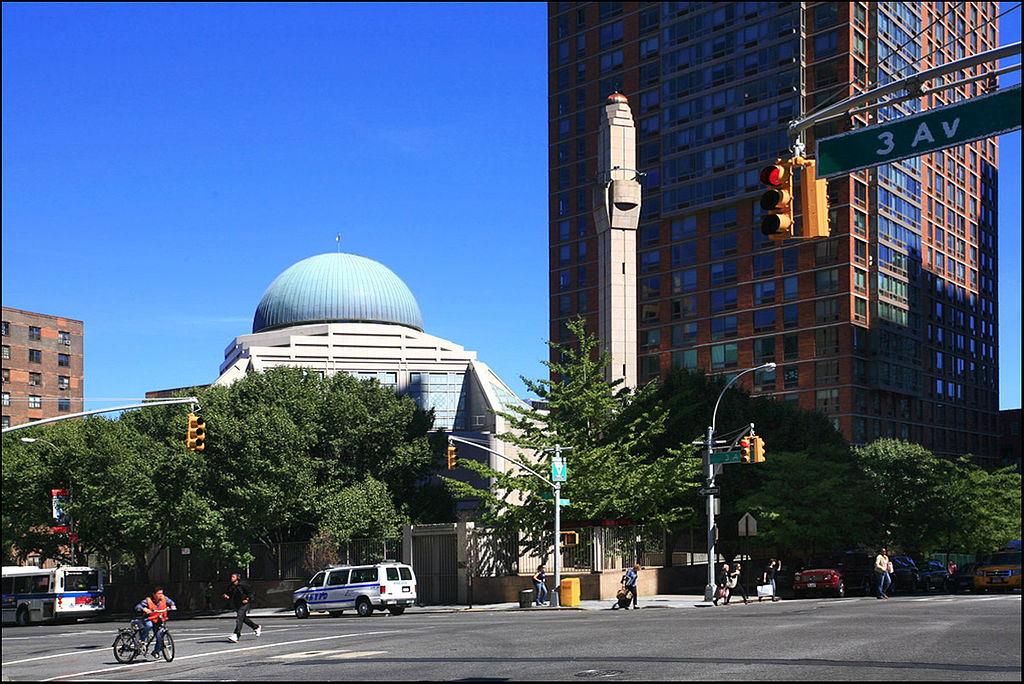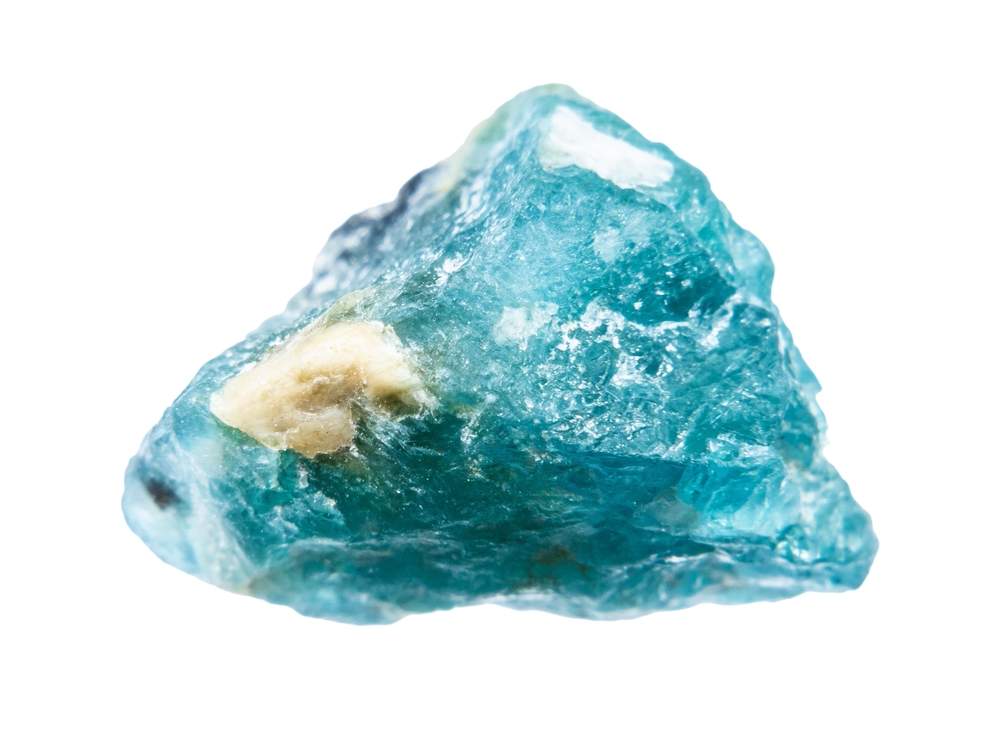Islam has a long and rich history in the United States, marked by the establishment of mosques that have served as spiritual, cultural, and community centers for Muslims across the country. From modest structures built by early immigrant communities to architecturally stunning landmarks, these mosques reflect the diversity and perseverance of American Muslims. Each one carries a unique story, rooted in its local community and the broader history of Islam in America. This article highlights some of the oldest and most significant mosques in the United States, showcasing their historical importance and lasting contributions.
Islamic Cultural Center of New York, Manhattan, New York

The Islamic Cultural Center of New York, completed in 1991, is one of the most prominent mosques in the United States. Located in the heart of Manhattan, it was the first purpose-built mosque in New York City and features a striking contemporary design. Its construction was spearheaded by a coalition of Muslim nations, reflecting the city’s diverse Muslim population. Its design includes a geometric dome and a tall minaret, blending modern and traditional Islamic architectural elements. The center serves as a hub for religious activities, cultural events, and educational programs. It has also been a key player in promoting interfaith dialogue and fostering understanding among New York’s diverse communities. It stands as a symbol of Islam’s growth and cultural integration in one of the world’s most dynamic cities.
Islamic Center of Passaic County, Paterson, New Jersey

The Islamic Center of Passaic County (ICPC), established in 1989, is one of the largest and most active mosques in New Jersey. Located in Paterson, it serves a diverse Muslim community, including immigrants from the Middle East, South Asia, and North Africa. It provides extensive services, such as daily prayers, youth programs, and educational classes, while fostering a sense of unity among its members. Its modern design reflects the growing influence and presence of Muslims in America during the late 20th century. ICPC is also known for its robust interfaith programs, promoting dialogue and understanding with other religious groups. Over the years, it has become a cornerstone of Muslim life in the region, actively engaging in social and charitable activities. Its establishment marked a significant milestone in the growing visibility and organization of the American Muslim community.
Dar al-Islam Mosque, Abiquiú, New Mexico

Built in 1981, the Dar al-Islam Mosque in Abiquiú, New Mexico, is renowned for its unique architectural design and serene setting. The mosque is part of a larger complex that includes educational facilities and housing, aimed at fostering a holistic Islamic community. Designed by Egyptian architect Hassan Fathy, the structure is a masterpiece of Islamic architecture, using sustainable materials and traditional building techniques. Located in the high desert of northern New Mexico, it provides a peaceful retreat for worship and contemplation. It serves both as a place of worship and a center for Islamic education, hosting seminars and workshops on Islamic culture and spirituality. Its establishment marked an innovative approach to community building and sustainability within the American Muslim context. It remains a unique and inspiring example of how tradition and modernity can coexist in religious spaces.
Islamic Center of Greater Toledo, Toledo, Ohio

Established in 1954, the Islamic Center of Greater Toledo is one of the oldest purpose-built mosques in the United States. Located in Perrysburg, a suburb of Toledo, Ohio, it serves a large and diverse congregation. Its striking architectural design, featuring a prominent dome and minaret, reflects a blend of traditional Islamic and modern styles. It was established by Lebanese and Syrian immigrants and quickly became a center for religious, cultural, and educational activities. It is widely recognized for its commitment to interfaith dialogue and community service, hosting events that foster understanding between Muslims and non-Muslims. Over the decades, the center has undergone several expansions to accommodate the growing Muslim population in the region. Today, it continues to play a vital role in promoting Islamic teachings and cultural preservation in northwest Ohio.
American Moslem Society (Dearborn Mosque), Dearborn, Michigan

Established in 1938, the American Moslem Society, also known as the Dearborn Mosque, is one of the oldest mosques in the United States. Located in Dearborn, Michigan, it was founded by Lebanese and Syrian immigrants who settled in the area. Initially a small prayer space, the mosque gradually expanded to accommodate the growing Muslim population, becoming a central hub for the community. Its significance lies not only in its age but also in its role as a cornerstone for Islamic life in the Detroit metropolitan area. Over the decades, it has hosted religious services, educational programs, and cultural events, fostering a strong sense of community. It is also active in interfaith initiatives, helping to build bridges with other religious groups in the region. Today, it remains an important institution for Muslims in Dearborn, reflecting the city’s rich Islamic heritage and cultural diversity.
Islamic Center of Cedar Rapids, Iowa

The Islamic Center of Cedar Rapids, established in 1934, is one of the first purpose-built mosques in the United States. Located in Iowa, it was founded by Muslim immigrants from Lebanon and Syria who had settled in the region. The center initially served as both a place of worship and a community hub, providing a space for cultural preservation and religious education. Its simple design reflected the modest resources of the early Muslim settlers while emphasizing their commitment to faith. Over time, it has undergone expansions and renovations to accommodate a growing and diverse Muslim population. Today, it stands as a beacon of interfaith harmony and a center for community activities. Its history underscores the perseverance of early Muslim immigrants in establishing their presence in America. It also serves as a reminder of the Midwest’s role in the history of Islam in the U.S.
Powers Street Mosque, Brooklyn, New York

The Powers Street Mosque, also known as the Brooklyn Moslem Mosque, was established in 1931 by a community of Lipka Tatars from the Białystok region of Poland. Located in the Williamsburg neighborhood of Brooklyn, it is one of the oldest surviving mosques in the United States. The building, originally a church, was purchased and converted into a mosque, reflecting the adaptability and resourcefulness of the early Muslim immigrants. Its interior retains elements of its original design, with modifications to accommodate Islamic worship practices. Over the decades, it has served as a spiritual home for various Muslim communities, including those from Eastern Europe and Central Asia. Despite the challenges of maintaining an aging structure, it remains a symbol of the enduring presence of Islam in New York City. In recent years, efforts have been made to preserve its historical significance and continue its mission of serving the Muslim community. It highlights the diversity of early Muslim immigrant experiences in America.
Al-Sadiq Mosque, Chicago, Illinois

Established in 1922, the Al-Sadiq Mosque in Chicago holds the distinction of being one of the earliest built mosques in the United States. Located in the Bronzeville neighborhood, it was commissioned by Mufti Muhammad Sadiq, a missionary of the Ahmadiyya Muslim Community. It served as the national headquarters for the Ahmadiyya movement in America until 1950. Its establishment marked a significant milestone in the spread of Islam in the U.S., particularly among African American communities. Its architecture features a distinctive dome and minarets, reflecting traditional Islamic design. Over the years, it has been a center for religious education and interfaith dialogue. Today, it continues to serve a diverse congregation, upholding its legacy of inclusivity and outreach. It stands as a historic symbol of the contributions of early Muslim pioneers in America and a hub for faith and community building.
This article originally appeared on Rarest.org.
More from Rarest.org
13 Unusual Architectural Wonders Hidden Around the World

All around the world, hidden architectural wonders blend creativity, history, and ingenuity in ways that often go unnoticed by most travelers. These unusual structures can be found in remote locations, unexpected cities, or tucked away in natural landscapes Read More.
15 Lesser-Known Species on the Brink of Extinction

Many species around the world are facing the threat of extinction, but not all of them are well-known. While efforts to save popular animals like pandas and tigers often make headlines, lesser-known species are quietly disappearing at an alarming rate. Read More.
14 Rare Gemstones Found Only in Specific Regions

Rare gemstones hold a special allure, not just for their beauty but for their scarcity. Found only in specific regions around the world, these stones are prized by collectors and jewelers alike. The combination of unique geological conditions and limited supply makes each of these gems both valuable and captivating. Read More.
